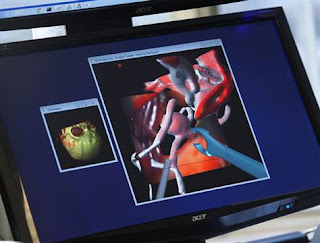Tuesday, June 19, 2012
Surgeons simulate aesthetic procedures using 3D photography
If you are one the thousands of people each year considering aesthetic plastic surgery, MidAmerica Plastic Surgery has some good news for you. Recent advances in three dimensional (3D) photography combined with revolutionary new software allow prospective patients to preview what they will look like as the result of breast augmentation, facial procedures, and more, well in advance of any surgery.
Both the VECTRA® 3D camera and Sculptor software which make this possible were developed by Canfield Imaging Systems of Fairfield, NJ, the world's leading provider of medical photography systems. The process starts with a VECTRA 3D session which produces a three-dimensional photograph of the patient. Then, using Sculptor software, the surgeon is able to simulate the expected results of a variety of aesthetic procedures.
"My patients absolutely love this," said Dr. Ryan Diederich. "For the first time, they're able to see a 3D picture of themselves with their new look. Because it's in 3D, I can rotate their picture to any viewpoint and they can really examine the desired result. We can make changes here and there and agree on a final look in advance, and this truly helps them make a decision".
SOURCE MidAmerica Plastic Surgery
Sunday, June 17, 2012
3-D imaging lets brain surgeons rehearse risky procedures
 |
| Using CT and MRI scans, software builds up a 3-D image of the brain. |
A surgeon probes a patient's brain and sees her target: a swelling on the side of a blood vessel, like a blister on a tire where the rubber has worn off. It's an aneurysm. She uses tiny clips to cut it off from the blood vessel. But there's a problem: an unseen defect causes the aneurysm to burst, resulting in a massive stroke. But there's no problem — she can try again because it was all done in a simulator.
In the next few months, University Hospital Case Medical Center in Cleveland and UCLA will be testing a 3-D imaging system that, coupled with a tool that gives tactile feedback, will allow doctors to rehearse high-risk brain surgery. The system will be tested on virtual brain aneurysms, comparing the outcomes with real surgeries that were done without it.
Subscribe to:
Posts (Atom)
